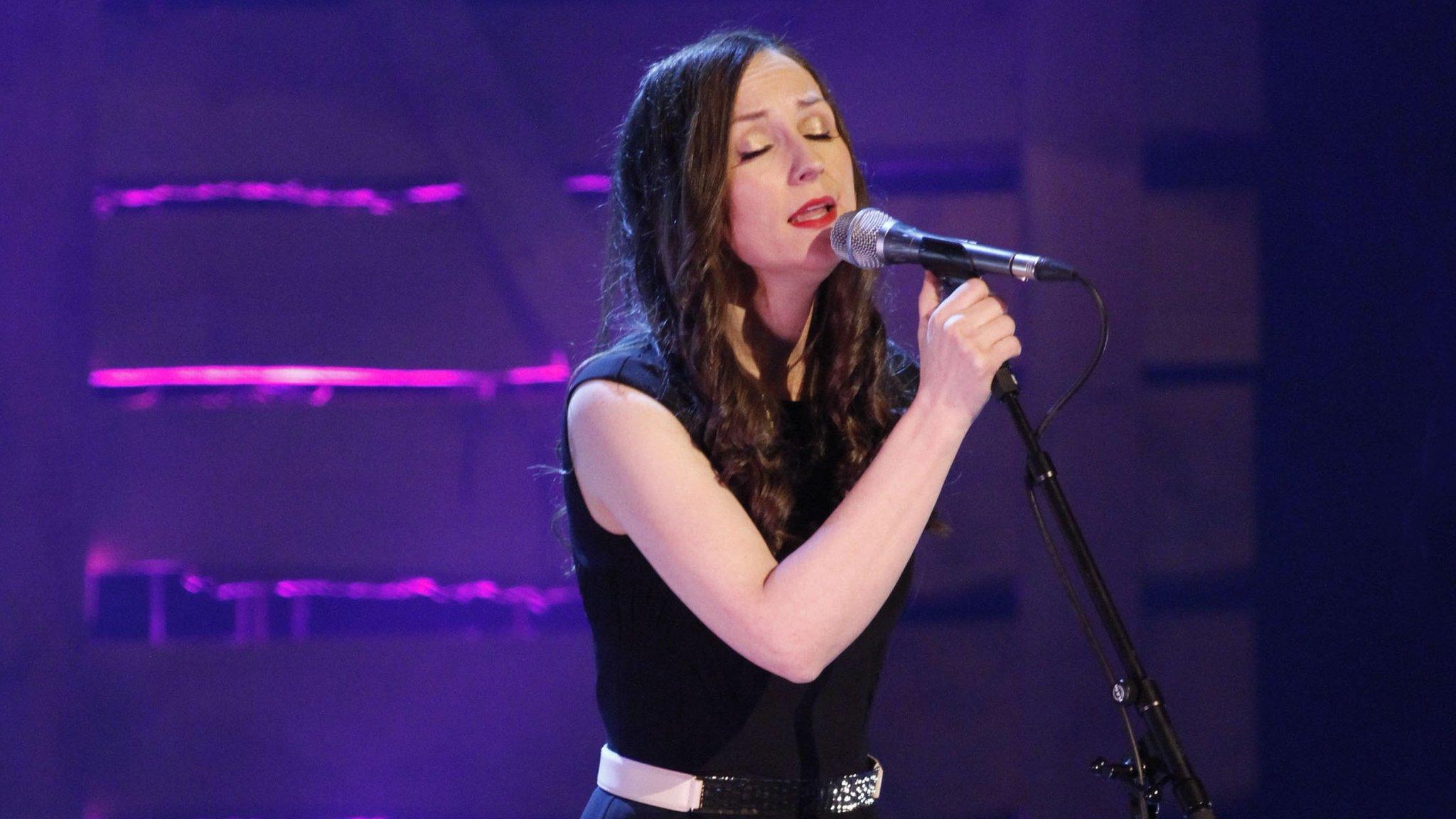National commemorative service recalls Iolaire disaster
- Published

Prince Charles and Nicola Sturgeon attended the ceremony
A national commemorative service has taken place to mark 100 years since the Iolaire disaster in the Western Isles.
More than 200 men, returning home after the end of World War One, died when the naval yacht sank just yards from the Lewis coastline on 1 January 1919.
HMY Iolaire hit a reef in bad weather close to Stornoway harbour.
Prince Charles and First Minister Nicola Sturgeon were among those who attended the service at the Iolaire Memorial at Holm, Lewis.
Prince Charles, known as the Duke of Rothesay while in Scotland, gave a reading at the service and met with descendants, while Ms Sturgeon also spoke with members of the public.
They both laid wreaths at a monument which overlooks the scene of the tragedy, as did representatives from emergency services and other organisations.
A note left by the prince read: "In special remembrance of your service and sacrifice."

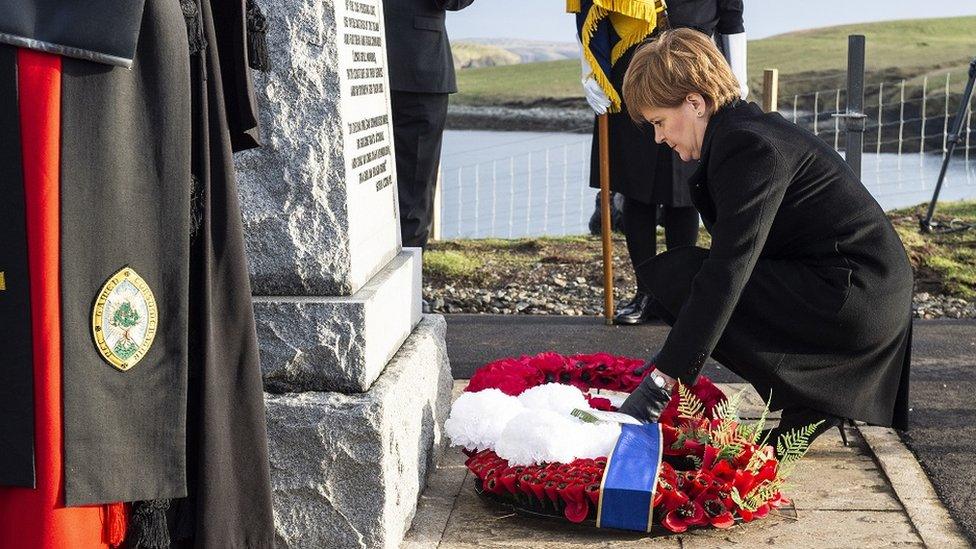
Ms Sturgeon, said: "As we welcome in the New Year, today in Stornoway we rightly look back 100 years and remember those lost on the Iolaire - a tragedy that involved so many, so close to shore and, for most of the men, so close to home.
"We reflect on those who perished and how survivors, family, friends and the wider communities on Lewis, Harris and Berneray must have felt.
"It may have been a century ago but the legacy of the Iolaire will never be forgotten. I was honoured to be part of the commemorations and meet descendants."
Iolaire disaster near Stornoway remembered
The service, organised by WW100 Scotland and the council, was conducted by The Very Reverend Dr Angus Morrison.
While the service on land took place, a similar event, led by Rev James Maciver of Stornoway Free Church, was held on board Caledonian MacBrayne's ferry MV Loch Seaforth.
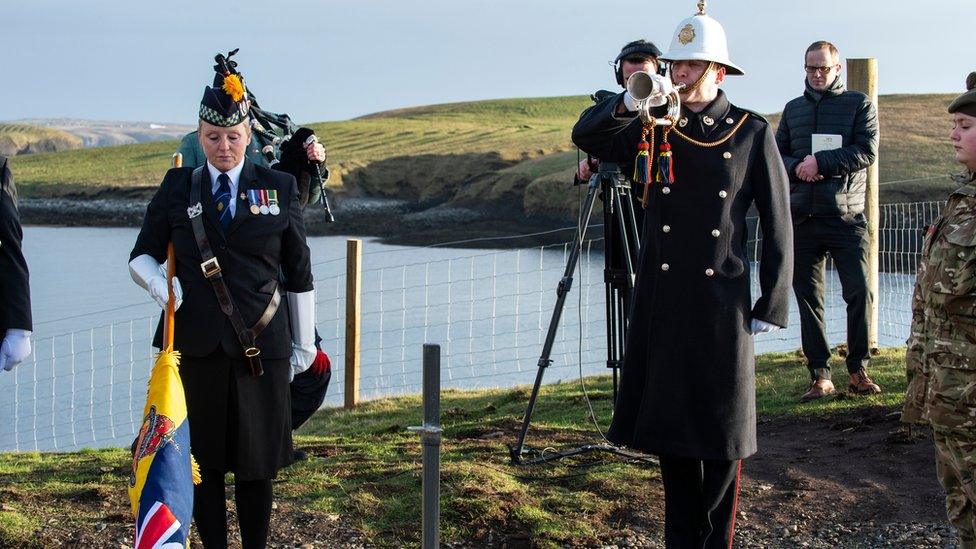
The boat was situated near where the Iolaire hit the rocks of the reef, called the Beasts of Holm on New Year's Day in 1919.
More than 500 people were on board the ferry, including schoolchildren from across the Western Isles.
The children threw 201 red carnations into the sea as the service draws to a close.

The national commemorative service was held at the Iolaire Memorial at Holm
Following the service, Prince Charles unveiled a new sculpture to commemorate the Iolaire.
Commissioned by Stornoway arts hub An Lanntair, the sculpture features a bronze depiction of a coiled heaving line which references the heroism of John Finlay Macleod.
He swam ashore with a rope to help rescue 40 of the 79 men who were saved.
One of the wreath-bearers, Lt Alison Ross of the Royal Navy, is his great-great niece through marriage.
'Shoulder-to-shoulder'
The 29-year-old, of Great Bernera, said: "To do what he did at a time like that is pretty incredible.
"I'm so glad I could be here with the Navy, but also with my great-aunt, standing shoulder-to-shoulder with the community - it was really quite an honour.
"Every single village on the Isle of Lewis was affected by the disaster. It's such as shame that people weren't able to talk about it for decades afterwards.
"So it's really incredible now that 100 years later the whole community can come together."
The sculpture was created by artists Will Maclean, Marian Leven and Arthur Watson and bears the names of those lost and the communities they came from, as well as a bronze wreath composed of maritime insignia.
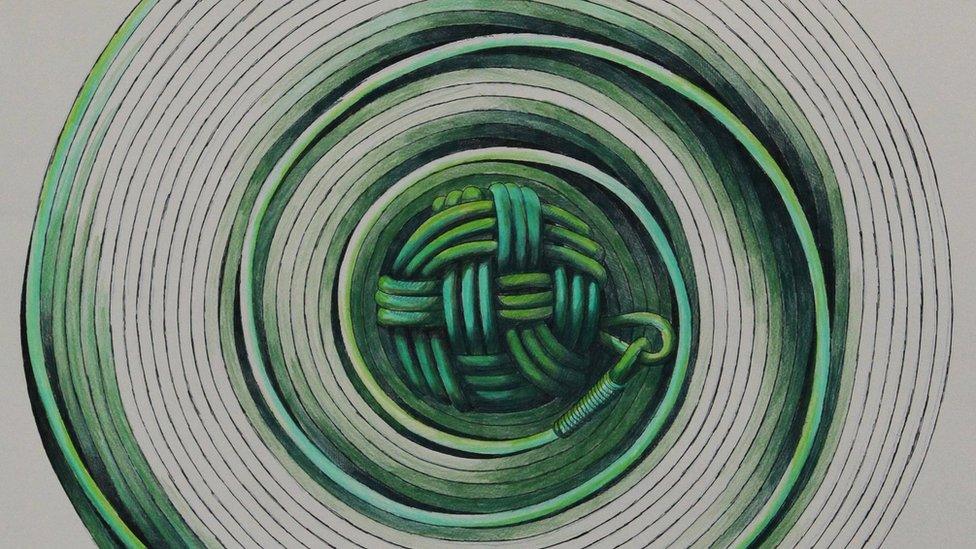
An illustration of a heaving line - a rope used in the rescue of survivors - is the main feature of a new sculpture
The Iolaire - which means "eagle" in Gaelic - set sail from Kyle of Lochalsh on the west Highlands mainland on New Year's Eve 1918.
While making its final approach into Stornoway harbour in the early hours of 1 January in a strong gale, the boat changed course at the wrong point.
With the lights of the harbour in sight, the ship struck rocks at full speed and immediately began to tilt, filling up with water.
Although the stern of the boat was at one point just six metres (20ft) from land, many of the men onboard were weighed down by their heavy uniforms and were unable to swim ashore.
Most of those who died were men returning home to the islands after serving in the armed forces during World War One.
The scale of the disaster, so close to home and coming at the end of the war, had a devastating effect across the isles.
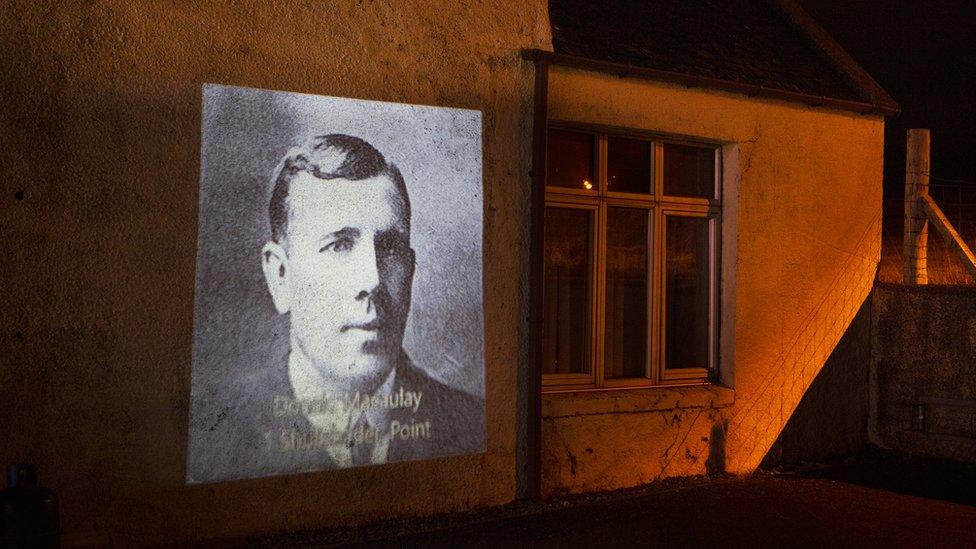
Images of victims were projected onto buildings on the island
Meanwhile, the faces of Iolaire victims from the Point and Sandwick area were projected on to buildings to mark the anniversary.
Community wind farm charity the Point and Sandwick Trust projected 40 portraits and photographs onto the side of its office at the Old Knock School.
The three turbines at Beinn Ghrideag and the rest of the old school building were also lit up red, as they were for Remembrance Day.
Community wind farm developer Calum MacDonald said: "The Iolaire was such a colossal loss to the whole of our islands that we sometimes struggle to grasp the individual, family and human scale of the tragedy.
"But these portraits and photographs still speak to us vividly and can help to bring home the sheer heroism of that generation - not just those who lost their lives on that awful night but all those who were touched by those four terrible years of war."
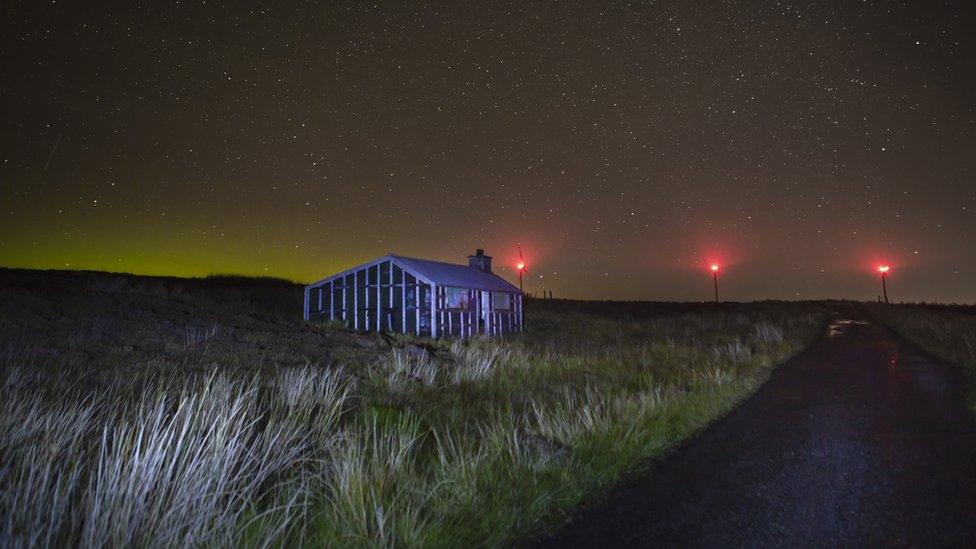
The three turbines at Beinn Ghrideag will also be lit up red, as they were for Remembrance Day
- Published1 January 2019
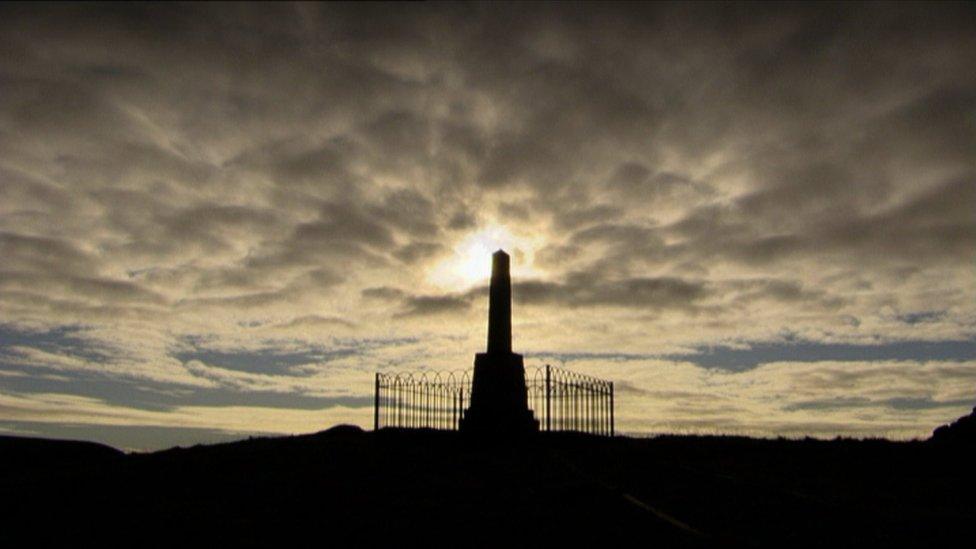
- Published19 December 2018

- Published13 December 2018
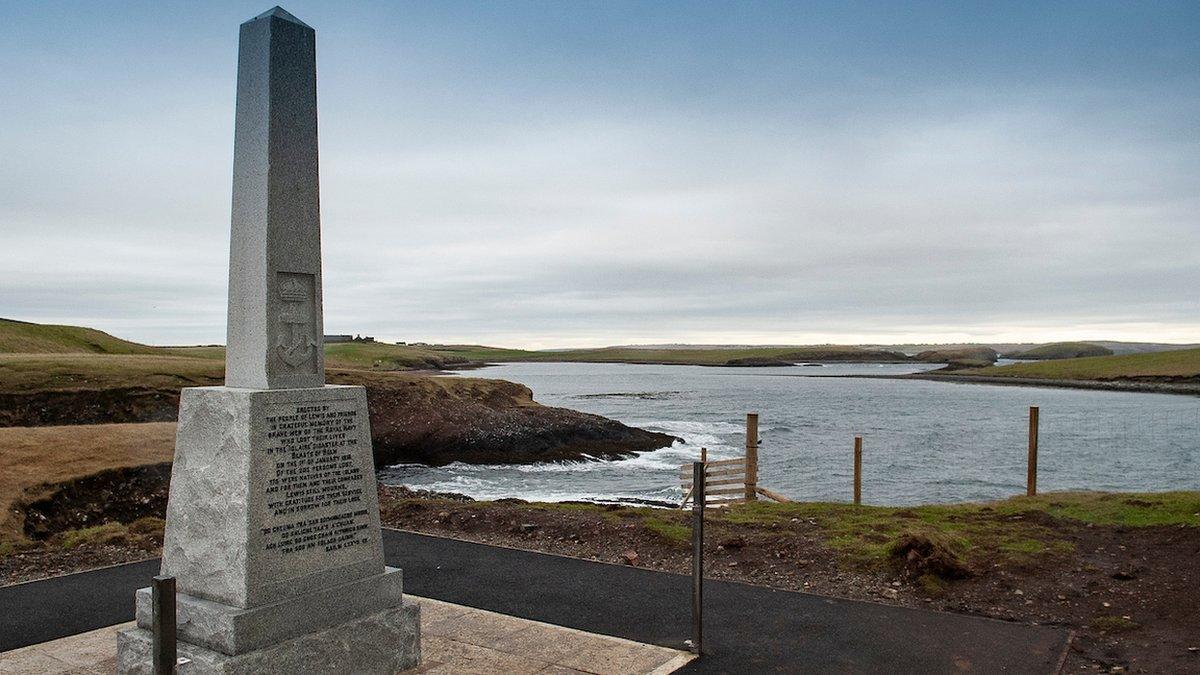
- Published10 December 2018
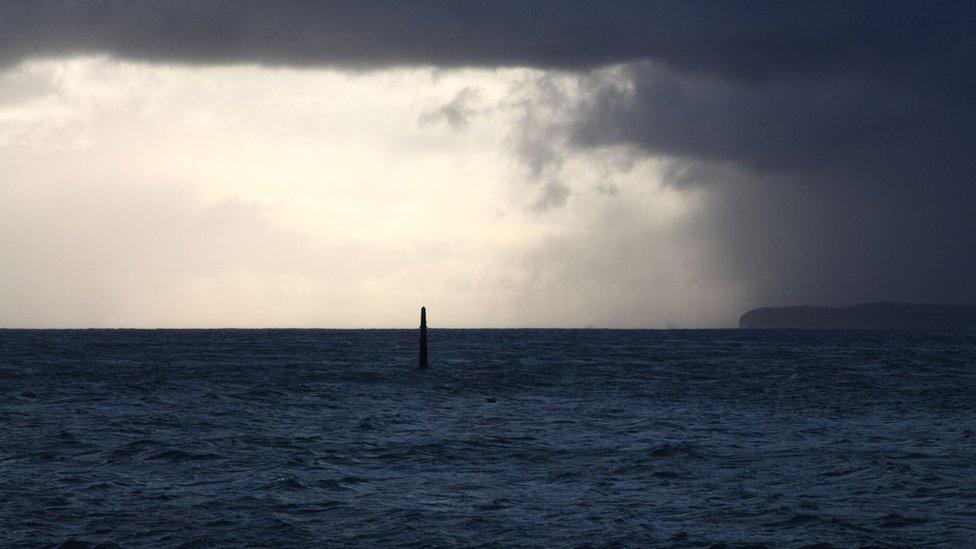
- Published6 November 2018
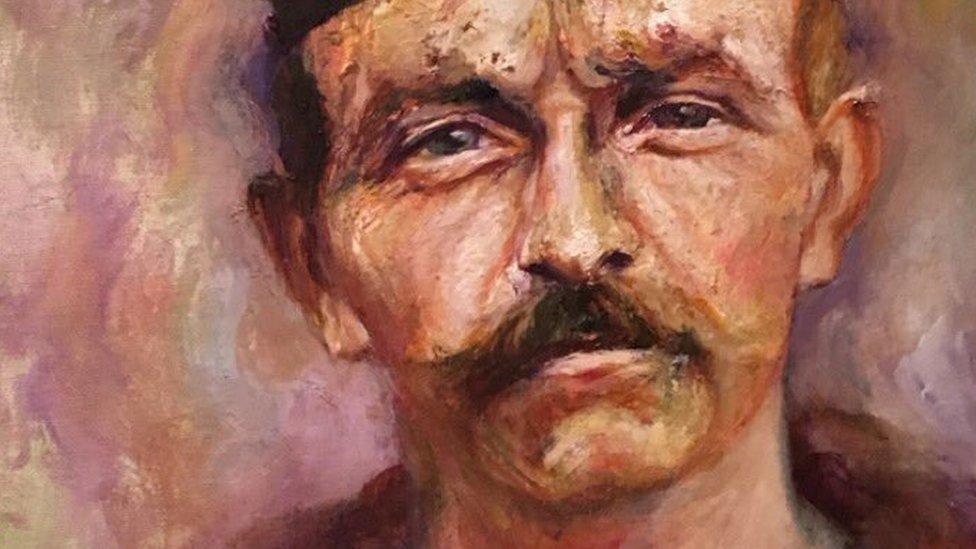
- Published7 August 2018

- Published9 March 2018
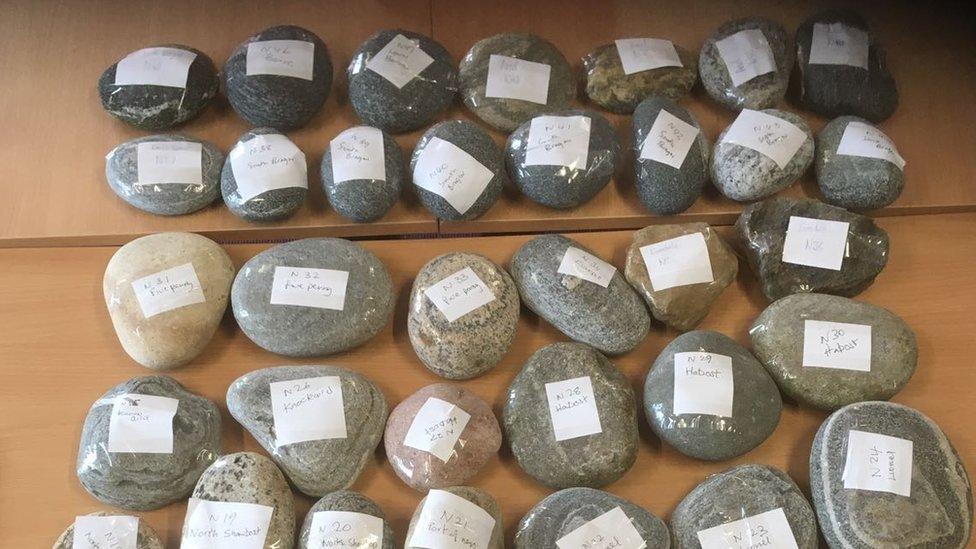
- Published13 February 2018
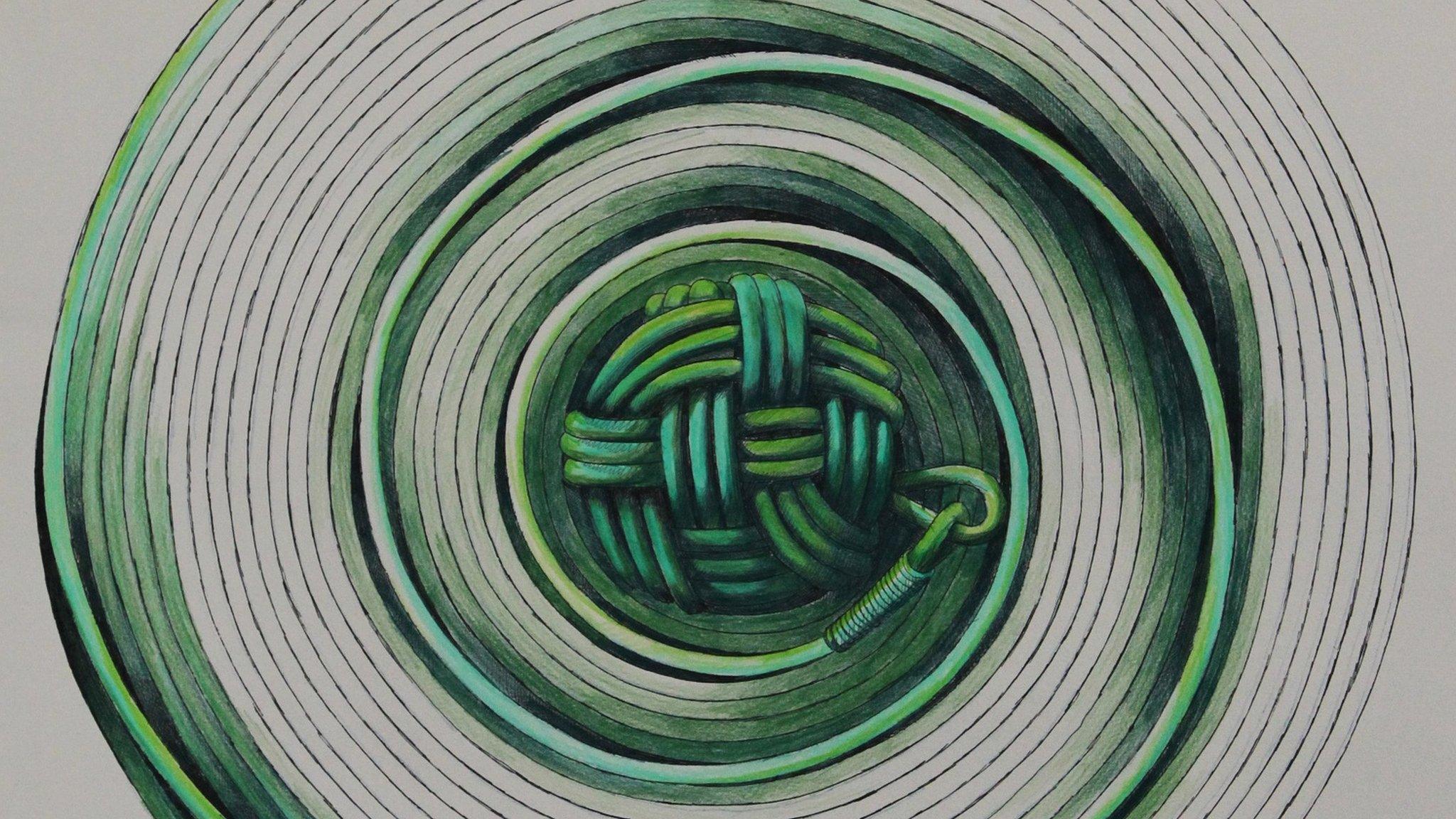
- Published23 January 2018
